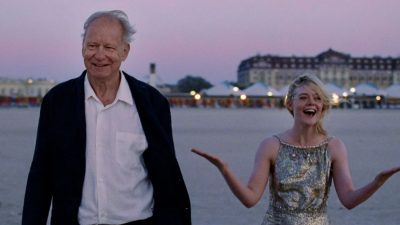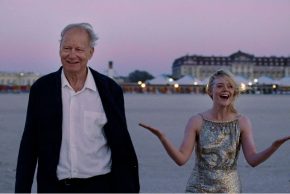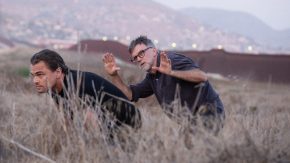Four and a half years ago, I had a very impressive discussion with Levon Eskenian, leader of Armenian Gurdjieff Ensemble (with a Hungarian article as a result). They were founded to play ethnographically authentic arrangements of the music of the legendary spiritual leader G. I. Gurdjieff, but through that work, they also developed an interest in folk music collector and composer Komitas Vardapret and his contemporary Béla Bartók. Back then, we ended the interview with a cliffhanger that the Gurdjieff Ensemble would like to learn more about Bartók and the Hungarian part of Eastern European ethnomusicology. On the one hand, they have really extended their knowledge ever since, as the following interview with Levon Eskenian may reveal. On the other hand, last year the war has started again, and we cannot stay silent on that in 2021…
What will you play in Budapest this time?
Our original concept was to have a concert that mostly revolves around Bartók, including his piano pieces. However, my wife, the pianist Lusine Grigoryan who through her interpretations conveys the mysterious presence typical of rustic and ritual music, could not come due to a mixture of pandemic and visa issues. So we skipped that idea of having the piano works for now, and we will play pieces by Gurdjieff, Komitas and Bartók on our traditional instruments.
The interesting part of our concert is that we went through the book that contains folk melodies which Bartók collected in 1936 in Asia Minor. The title of it is ‘Turkish folk music’. However, a much better title would have been ‘folk music from Turkey’. The territory might have been Turkey at that time, but the music is from several different local ethnicities. Bartók mentions many of them, but not the Armenians, and he did not realise that many of those melodies are actually Armenian ones. Pre-genocide, Armenians were the majority in many local villages; however, Bartók was there twenty years after the genocide, so he already found a different ethnic landscape on many levels. Nevertheless, the folk melodies persisted. I would say that even today, there are many people in Turkey who have a hidden Armenian identity.
So will you play from that Bartók collection?
We will play those folk melodies that are Armenian, even if it is not stated clearly in the description. The village names and the exact times of the recording are in the book, though, and some of the Armenian names were still in use, despite all attempts to erase that cultural identity. The Vartan Village is a good example for that. Bartók wandered all around that area and, not surprisingly, heard and recorded a version of Lele Yaman, which is a sad love song, but after the genocide it became something like a hymn. Every Armenian around the world knows it. In the 1930s, not only Bartók collected that tune but also Komitas. We play both pieces and make Bartók’s and Komitas’ Lele Yaman versions reply to each other.
Is there any chance that Bartók knew about Komitas’ version or did they simply find the same melody at the same place?
It is much more likely that they both found it locally. Music historians still do not know much about how deeply Bartók knew Komitas’ works. It is known that Debussy knew Komitas, but in Bartók’s case, we believe that he simply found the same material during his own fieldwork. Both Komitas and Bartók had the same interest at that time, they both wanted to create a new language in classical music which is based on folk music. Prior to that, folk melodies were not in the centre of academic interest, but these two men did their collection work with a scientific structure and rigorosity, thereby being among the first practitioners of ethnomusicology.
But I guess it was an important difference that Komitas was more embedded in the local context of Asia Minor, whereas Bartók had Hungarian folk music on his mind and even his trips to Asia were supporting that work…
Indeed even more fascinating that while doing that, he found Armenian music and made it part of his collection, even if unaware of its true nature. Nevertheless, the title “Turkish folk music” is problematic, as I mentioned above. That music comes from many different ethnicities, and Armenian melodies in the book do not even sound like the real Turkish ones.
This is so relatable. We Hungarians would be outraged if we saw a collection full of Hungarian folk music of Transylvania called ‘Romanian folk music’. Even Bartók’s birthplace belongs to Romania now.
My grandparents are from a place which is now in Turkey. Komitas himself was born in a village which is now in Turkey. Some years ago, a journalist called Komitas Turkish, and I wrote back, telling them that it is totally ignorant to call someone “Turkish” who became mentally ill because he was tortured during the genocide for being Armenian. But we do not come to argue for anything or show some proof; we just want to play music. We are convinced that some melodies in that book are ours, and therefore we can play them the most authentically. It will be a very interesting concert.
Are the pieces all instrumental?
Some of them are. We will play many instruments: percussion, the zurna, the pogh, and one or two songs on the duduk. Those songs that involve lyrics are in Turkish, as using the Armenian language was forbidden. My grandparents who were born in Western Armenia before the genocide also spoke a lot of Turkish, because they had to. So they also sang in Turkish – but to the radically different and unique Armenian melody lines.
We all know from history that erasing culture often happens through erasing language. Or even religion: many Armenians in Turkey converted to Islam, yet they still maintained other aspects of Armenian identity, which might not have been what the authorities expected. And even today, there is a certain propaganda coming from Turkey, claiming that Armenians are not who they think they are.
A huge number of Armenian churches and monasteries were destroyed in Turkey during the last 100 years. There is, for instance, a piece related to our musical program called Msho Shoror: it is a series of ritual dance melodies that was performed during pilgrimages to the Saint Karapet Monastery near the city of Mush (today’s Muş in Turkey). Dating back to the 4th century, one of the marvelous and first Christian monasteries (as Armenia adopted Christianity in 301), the monastery was destroyed after 1915 and its population was annihilated. Through this archaic musical piece, at least a part of the past and a sacred tradition is preserved.
And because of geopolitical patterns, little or no reaction comes. Every country has their own interests, and sometimes they close their eyes to local people’s sufferings. Let us face it: Armenia is geographically in the way of Pan-Turkism.
What do you expect from this concert?
Ever since 2012, when the brutal murderer of Gurgen Margarian was released by the Hungarian government and went home to Azerbaijan as a hero, Armenia froze all diplomatic relations with Hungary. There is, for instance, no functioning embassy at the moment. We really hope that our concert might contribute to a new start between these two countries. Geopolitics here and there, the Armenian destiny has a lot of factors that Hungarians can relate to, starting with whole villages having been occupied by another country 100 years ago, and struggling through a planned eradication of local culture. It would be great if we could find out and reflect on these common patterns together at the concert.

























Comments